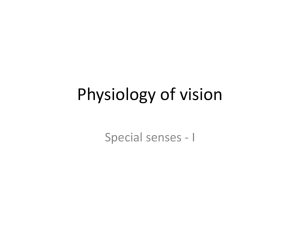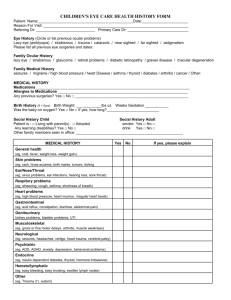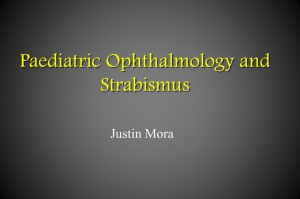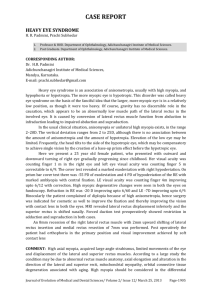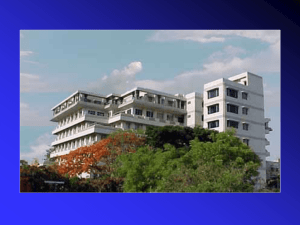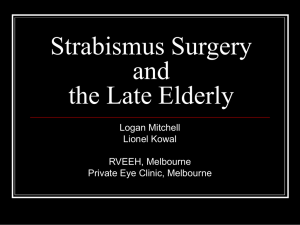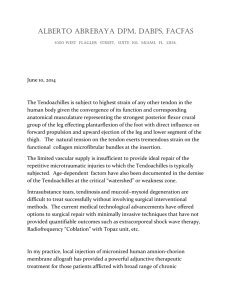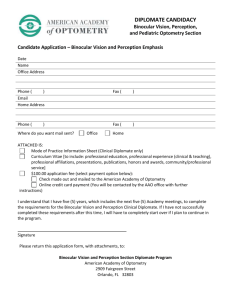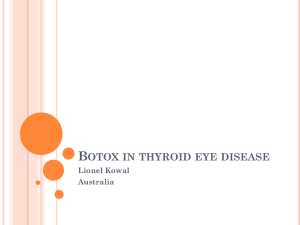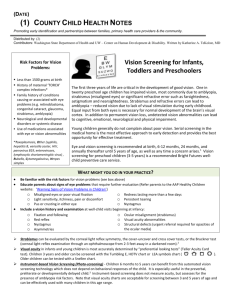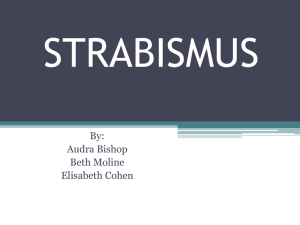OCULAR FIXATION WITH QUADRICEPS TENDON ALLOGRAFT
advertisement
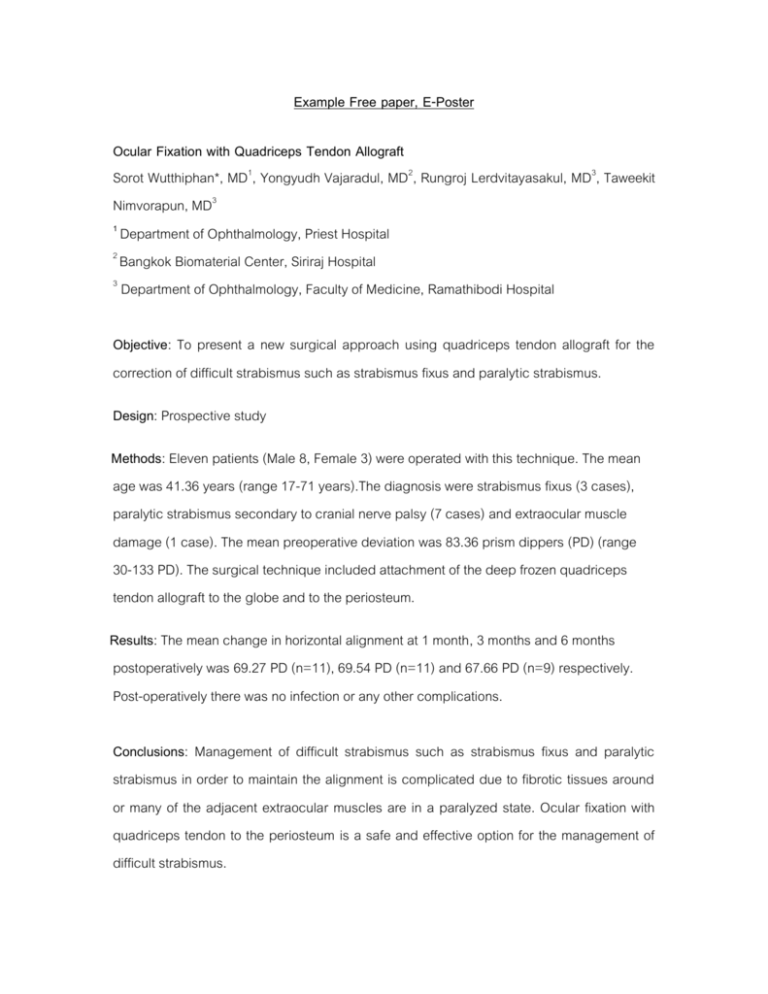
Example Free paper, E-Poster Ocular Fixation with Quadriceps Tendon Allograft Sorot Wutthiphan*, MD1, Yongyudh Vajaradul, MD2, Rungroj Lerdvitayasakul, MD3, Taweekit Nimvorapun, MD3 1 Department of Ophthalmology, Priest Hospital 2 Bangkok Biomaterial Center, Siriraj Hospital 3 Department of Ophthalmology, Faculty of Medicine, Ramathibodi Hospital Objective: To present a new surgical approach using quadriceps tendon allograft for the correction of difficult strabismus such as strabismus fixus and paralytic strabismus. Design: Prospective study Methods: Eleven patients (Male 8, Female 3) were operated with this technique. The mean age was 41.36 years (range 17-71 years).The diagnosis were strabismus fixus (3 cases), paralytic strabismus secondary to cranial nerve palsy (7 cases) and extraocular muscle damage (1 case). The mean preoperative deviation was 83.36 prism dippers (PD) (range 30-133 PD). The surgical technique included attachment of the deep frozen quadriceps tendon allograft to the globe and to the periosteum. Results: The mean change in horizontal alignment at 1 month, 3 months and 6 months postoperatively was 69.27 PD (n=11), 69.54 PD (n=11) and 67.66 PD (n=9) respectively. Post-operatively there was no infection or any other complications. Conclusions: Management of difficult strabismus such as strabismus fixus and paralytic strabismus in order to maintain the alignment is complicated due to fibrotic tissues around or many of the adjacent extraocular muscles are in a paralyzed state. Ocular fixation with quadriceps tendon to the periosteum is a safe and effective option for the management of difficult strabismus. Example Symposium, Instruction Course OPRC Symposium: Optimizing Efficiency and Outcomes in Oculoplastic Procedures Bobby Korn, MD, Don Kikkawa, MD, Karim Punja, MD Moderator: Sumalee Wangwerawong, MD Synopsis: This lecture will present a practical guide for the evaluation, planning, and surgical management of common oculoplastic procedures. The course will focus on review of surgical videos for functional and cosmetic upper and lower blepharoplasty, ptosis repair, entropion and ectropion repair. Medical indications, pearls and pitfalls will be discussed. Objective: To enable participants to evaluate and manage common outpatient oculoplastic procedures in an efficient and optimal manner.
